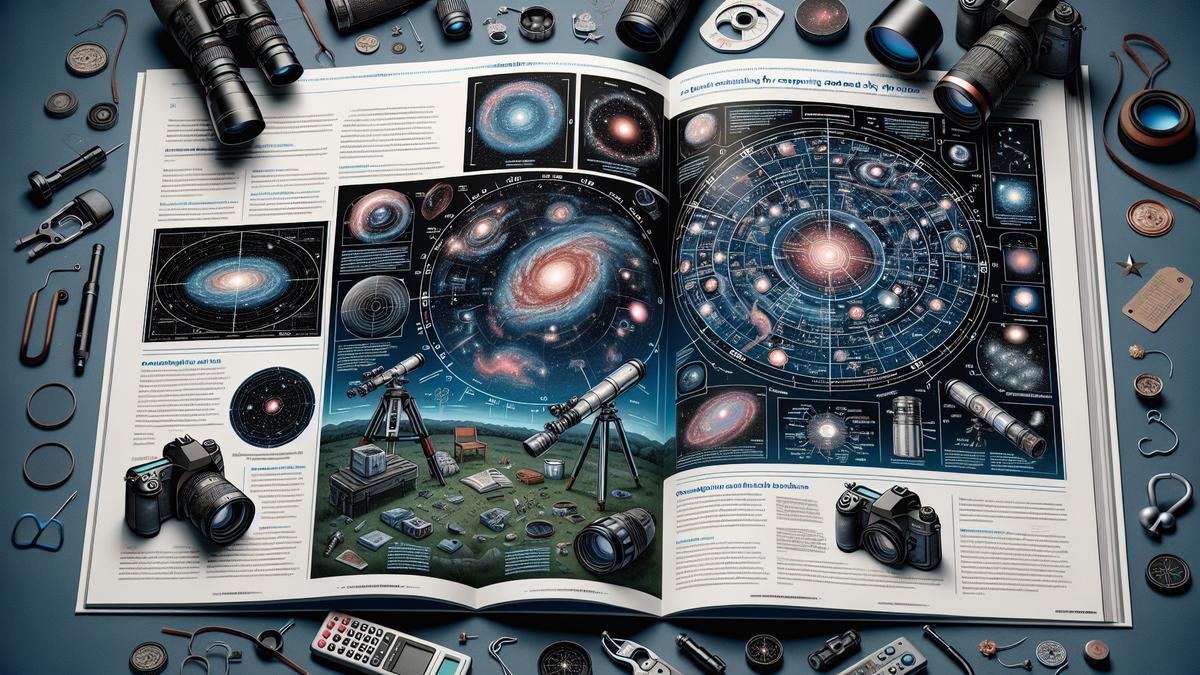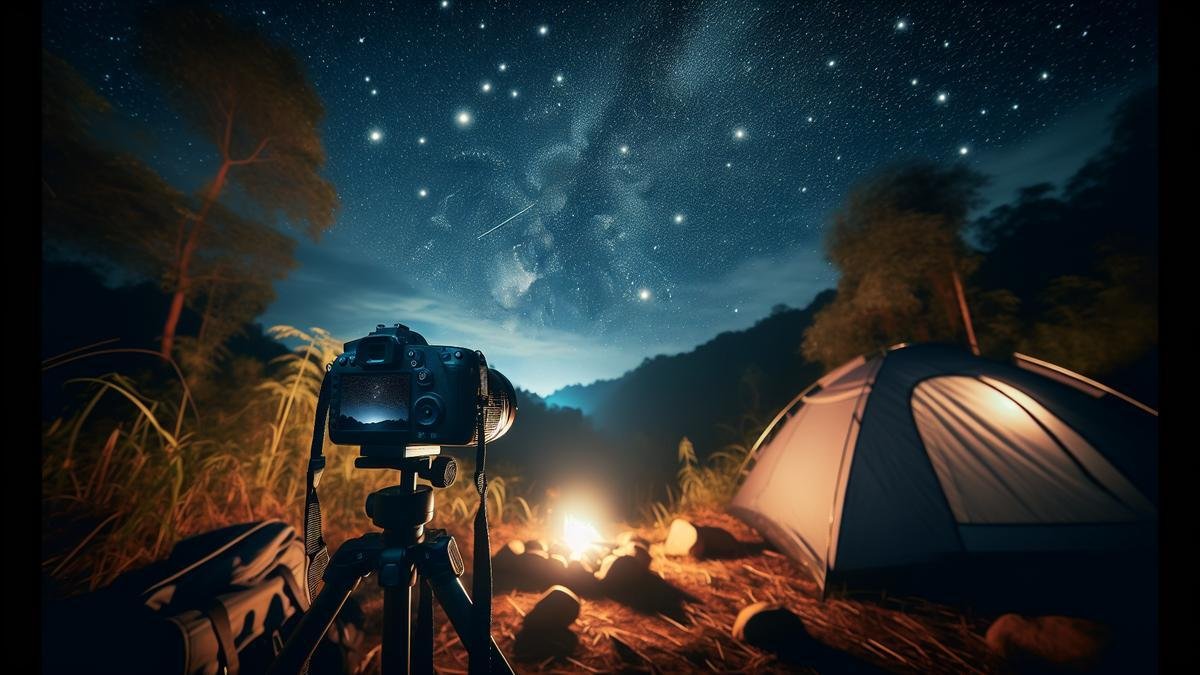Capturing Deep-Sky Objects: A Comprehensive Guide is your ultimate journey into the cosmos, taking you step by step through the thrill of deep-sky astrophotography. Imagine unlocking the secrets of galaxies, nebulae, and star clusters from your backyard! Dive into choosing the right telescope and camera, explore essential gear setup, and master exposure techniques. Discover popular beginner targets and learn post-processing tricks to enhance your stunning celestial captures. Whether you’re battling light pollution or fixing star trails, we’ll cover it all. Ready to turn the night sky into your canvas? Lets get started!
Key Takeaways
- Understand your camera and telescope settings.
- Learn the best times and places for deep-sky viewing.
- Use a star map app to locate galaxies, nebulae, and star clusters.
- Practice with different exposure times.
- Be patient and take lots of photos.
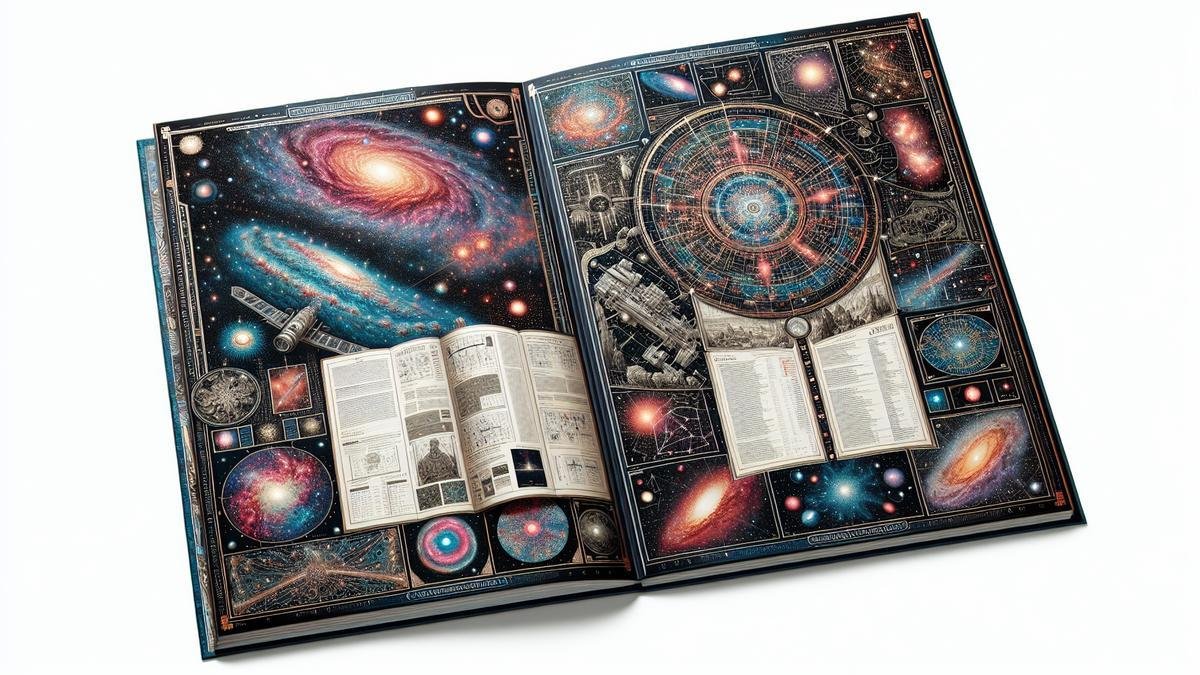
Essential Equipment for Deep-Sky Astrophotography
So, youre ready to dive into the mesmerizing world of deep-sky astrophotography? Capturing galaxies, nebulae, and star clusters requires some specialized gear. Lets break down the essentials youll need to start snapping those jaw-dropping celestial images.
Choosing the Right Telescope
Your telescope is the heart of your deep-sky setup. Picking the right one can feel like navigating a maze, but Im here to guide you.
Aperture and Focal Length
The aperture is one of the most crucial aspects. A larger aperture lets in more light, allowing you to capture faint objects. Look for a telescope with at least an 8-inch aperture. Heres a quick comparison:
| Aperture Size | Best For | Pros | Cons |
|---|---|---|---|
| 6 inches | Beginners | Portable, affordable | Limited light gathering |
| 8 inches | Intermediate | Good balance of size and capability | Heavier, more expensive |
| 10+ inches | Advanced | Excellent light gathering, detailed images | Bulky, costly |
Focal length is another key factor. A longer focal length provides higher magnification, which is great for small objects like distant galaxies. However, it can make tracking and guiding more challenging.
Types of Telescopes
Youve got a few options here:
- Refractors: These are known for their sharp images and low maintenance. Theyre great for wide-field views but can be pricey.
- Reflectors: These offer a lot of bang for your buck. Theyre excellent for deep-sky objects but require regular alignment.
- Catadioptrics: These hybrid telescopes combine the best of both worlds. Theyre compact and versatile but can be more expensive.
For a deeper dive into choosing the best telescope, check out this comprehensive guide.
Selecting the Best Camera
Your camera is just as important as your telescope. Youll need something that can handle long exposures and capture fine details.
DSLR vs. Mirrorless
Both DSLRs and mirrorless cameras have their merits. Heres a quick rundown:
| Camera Type | Pros | Cons |
|---|---|---|
| DSLR | Robust, wide lens selection, good battery life | Bulky, mirror slap can cause vibrations |
| Mirrorless | Compact, electronic viewfinder, silent operation | Shorter battery life, fewer lenses (but growing) |
For a more detailed comparison, you might find this article useful.
Dedicated Astronomy Cameras
If youre serious about deep-sky photography, consider a dedicated astronomy camera. These cameras are designed for long exposures and often come with cooling systems to reduce noise. Heres a comparison:
| Camera Type | Best For | Pros | Cons |
|---|---|---|---|
| DSLR/Mirrorless | Beginners/Intermediate | Versatile, can be used for daytime photography | More noise in long exposures |
| CCD/CMOS | Advanced | Low noise, high sensitivity, cooling | Expensive, requires a laptop for control |
For some top camera picks, you can explore this list.
Must-Have Accessories
The right accessories can make or break your astrophotography experience. Here are some essentials:
Mounts and Tripods
A stable mount is crucial for long exposures. Equatorial mounts are preferred as they track the rotation of the Earth, keeping your target centered. For more on mounts, this guide is a must-read.
Filters
Filters can enhance your images by blocking out unwanted light and highlighting specific wavelengths. Some must-haves include:
- Light Pollution Filters: These help reduce the glow from city lights.
- Narrowband Filters: These isolate specific wavelengths, great for capturing nebulae.
For a comprehensive look at filters, check out this article.
Power Solutions
Youll need a reliable power source for those long nights under the stars. Portable power packs are a lifesaver. For more options, this article is a great resource.
Star Trackers
Star trackers are invaluable for keeping your camera aligned with the stars. Theyre especially useful for wide-field shots. Learn more about using star trackers here.
Setting Up Your Astrophotography Gear
Embarking on the journey of capturing deep-sky objects like galaxies, nebulae, and star clusters can be both thrilling and challenging. To make your experience smoother, let’s dive into setting up your astrophotography gear.
Polar Alignment Basics
Polar alignment is crucial for long-exposure astrophotography. It helps your telescope track celestial objects accurately. Heres a step-by-step guide to get you started:
- Find Polaris: Begin by locating Polaris, the North Star. This star is almost directly above the North Pole and serves as a reference point.
- Set Up Your Tripod: Place your tripod on a stable surface. A reliable tripod is essential to avoid any vibrations.
- Adjust the Mount: Align your mounts polar axis with Polaris. This can be done using the polar scope included with most mounts.
- Fine-Tune the Alignment: Use your mounts adjustment knobs to make precise movements. Ensure Polaris is centered in the polar scope reticle.
Heres a quick reference table to help you remember the steps:
| Step | Action |
|---|---|
| 1 | Find Polaris |
| 2 | Set Up Your Tripod |
| 3 | Adjust the Mount |
| 4 | Fine-Tune the Alignment |
Balancing Your Telescope
Proper balancing of your telescope is vital for smooth tracking and avoiding strain on your mount. Follow these simple steps:
- Mount the Telescope: Attach your telescope to the mount. Ensure its secure.
- Balance the Declination Axis: Unlock the declination axis and move the telescope until it doesnt tip to one side. Lock it in place.
- Balance the Right Ascension Axis: Unlock the right ascension axis and slide the counterweight until the telescope remains stable.
Pro Tip: Always double-check the balance after adding any accessories like cameras or filters.
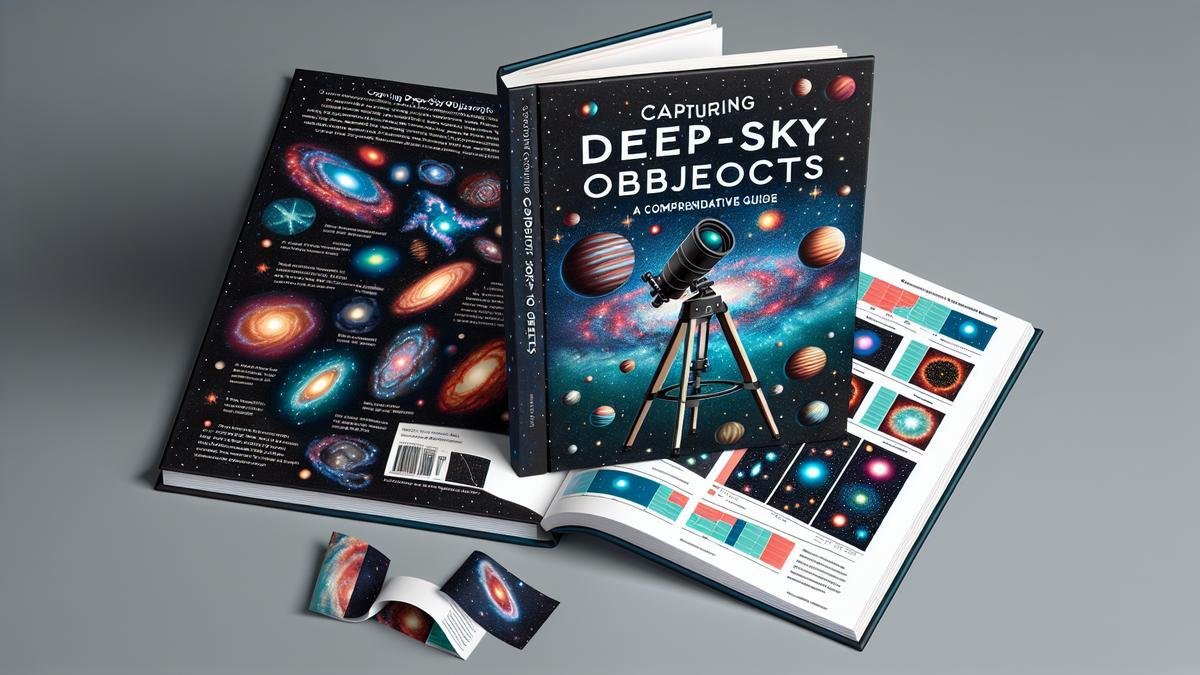
Understanding Deep-Sky Objects
When you think about capturing the night sky, you’re not just snapping a photo of stars. You’re diving into the captivating world of deep-sky objects. This includes galaxies, nebulae, and star clusters. Each of these cosmic wonders offers its own challenges and rewards. Let’s break down the essentials to help you get started on this fascinating journey.
Types of Deep-Sky Objects
Deep-sky objects fall into three main categories: galaxies, nebulae, and star clusters. Each type possesses distinct features and requires different techniques for capturing their beauty.
Galaxies
Galaxies are massive systems of stars, gas, dust, and dark matter. The most famous galaxy is the Milky Way, but there are countless others, each with unique shapes and sizes.
| Type | Description |
|---|---|
| Spiral | These galaxies have a flat, rotating disk with spiral arms. Example: Andromeda. |
| Elliptical | These are more rounded and lack the distinct arms of spiral galaxies. |
| Irregular | These galaxies don’t fit into the spiral or elliptical categories. |
Nebulae
Nebulae are vast clouds of gas and dust in space. They are often the birthplaces of stars and planets.
| Type | Description |
|---|---|
| Emission Nebulae | These glow brightly due to ionized gases. Example: Orion Nebula. |
| Reflection Nebulae | These reflect the light of nearby stars. Example: Pleiades. |
| Dark Nebulae | These are dense clouds that block light from behind them. Example: Horsehead. |
Star Clusters
Star clusters are groups of stars that are gravitationally bound to each other. They come in two main types:
| Type | Description |
|---|---|
| Open Clusters | These are loosely bound groups of stars. Example: Pleiades. |
| Globular Clusters | These are densely packed, spherical groups of stars. Example: M13 in Hercules. |
Identifying Key Features
Recognizing the key features of deep-sky objects is crucial for capturing their essence. Let’s look at what makes each type special.
Galaxies
When photographing galaxies, you’re often looking to capture the intricate details of their structure. Spiral arms, central bulges, and dust lanes are some of the features you should focus on. A telescope with a good focal length is essential for this task. For more tips on selecting the right telescope, check out this guide to choosing the best telescope for astrophotography.
Nebulae
Nebulae are rich in color and texture. Emission nebulae, for example, glow in vibrant hues due to the ionized gases. Reflection nebulae, on the other hand, shine with the light of nearby stars. Capturing these details requires a camera with high sensitivity and the right filters. For an in-depth look at the best filters for this purpose, visit this comprehensive filter guide.
Star Clusters
Star clusters are all about density and brightness. Open clusters are more spread out, while globular clusters are densely packed. To capture these, you’ll need a stable mount and precise tracking. This guide to astrophotography mounts and tracking systems can help you choose the right equipment.
Popular Targets for Beginners
Starting with some well-known targets can make your entry into deep-sky photography smoother. Here are a few popular targets that are perfect for beginners.
Andromeda Galaxy (M31)
The Andromeda Galaxy is one of the closest and brightest galaxies, making it an excellent target for beginners. It’s a spiral galaxy with a wealth of detail to capture. A DSLR or mirrorless camera with a good lens can do wonders. For camera recommendations, check out this list of top cameras for astrophotography in 2024.
Orion Nebula (M42)
The Orion Nebula is one of the most photographed nebulae due to its brightness and colorful appearance. It’s an emission nebula, glowing brightly in the night sky. Using a telescope and a camera with a high ISO setting can help you capture its vivid colors. For more on photographing nebulae, explore this detailed guide.
Mastering Exposure and Focus
Optimal Exposure Times
When you’re aiming to capture the breathtaking beauty of deep-sky objects like galaxies, nebulae, and star clusters, exposure time is your best friend. Think of it as the magic ingredient that turns your night sky photos from good to jaw-dropping. The trick is getting it just right.
Balancing Light and Time
The first thing you need to understand is the balance between light and time. Too short an exposure, and you won’t capture enough light to see those distant galaxies. Too long, and you’ll end up with star trails instead of pin-sharp points of light.
Here’s a handy table to give you a rough idea of exposure times based on the type of deep-sky object you’re capturing:
| Object Type | Optimal Exposure Time |
|---|---|
| Galaxies | 3-5 minutes |
| Nebulae | 5-10 minutes |
| Star Clusters | 1-3 minutes |
Using the Right Equipment
Your camera and lens setup also play a crucial role. For instance, using a high ISO setting can reduce the exposure time needed, but it can also introduce noise. If you’re unsure which camera to use, check out this guide on top cameras for astrophotography in 2024.
Achieving Sharp Focus
Focus is everything in astrophotography. A slight miscalculation can turn your stunning nebula into a blurry mess. Let’s dive into some tips to help you nail that perfect focus.
Using Live View and Zoom
Most modern cameras come with a Live View feature. Use it! Switch to Live View, zoom in on a bright star, and adjust the focus until the star becomes a tiny, sharp point. This method is far more accurate than relying on your camera’s autofocus.
Bahtinov Masks
If you’re serious about getting the sharpest focus possible, consider using a Bahtinov mask. This simple tool creates a diffraction pattern that makes it easy to see when your focus is spot-on. Here’s a quick comparison of focusing methods:
| Focusing Method | Accuracy | Ease of Use |
|---|---|---|
| Manual with Live View | High | Moderate |
| Autofocus | Medium | Easy |
| Bahtinov Mask | Very High | Easy |
Avoiding Common Mistakes
Even seasoned astrophotographers can make mistakes. Let’s look at some common pitfalls and how to avoid them.
Overexposure and Underexposure
One of the most common mistakes is overexposure or underexposure. Overexposure can wash out the details of your target, while underexposure can leave you with a dark, noisy image. Use your camera’s histogram to check your exposure levels. Aim for a well-balanced histogram without clipping at either end.
Ignoring Weather Conditions
Weather can make or break your astrophotography session. Cloud cover, humidity, and even light pollution can affect your shots. Always check the weather forecast and aim for clear, dry nights. If you’re struggling with light pollution, consider using specialized filters. You can find more about the best filters for astrophotography here.
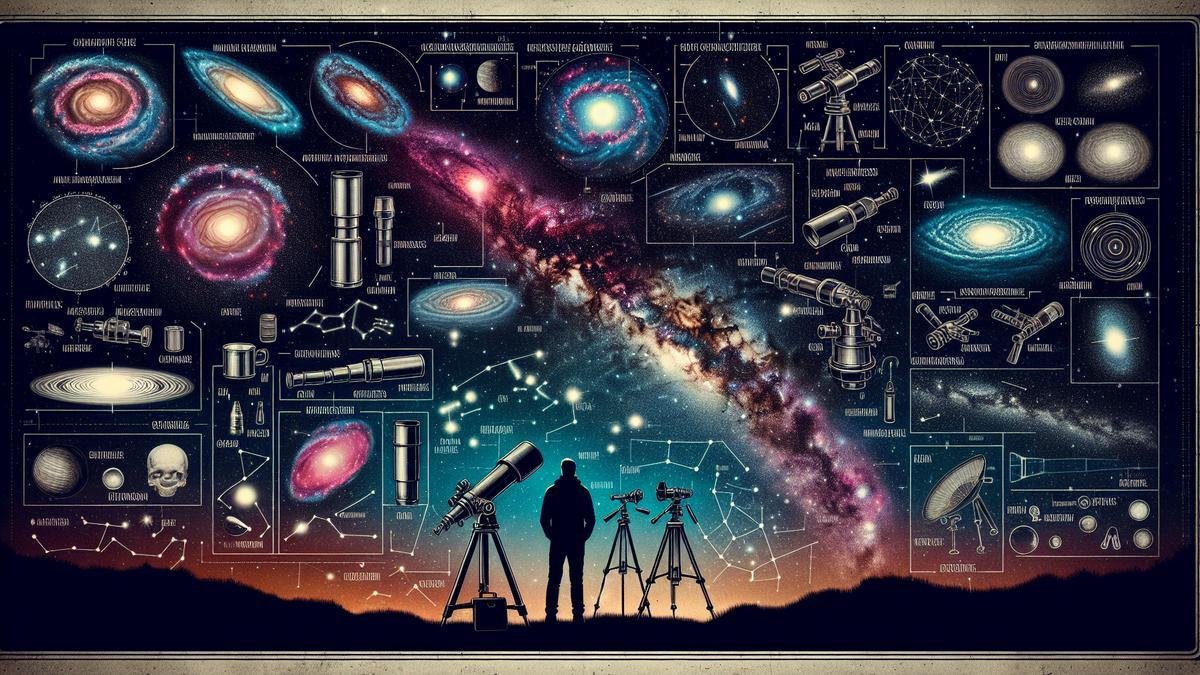
Post-Processing Your Astrophotographs
So, you’ve spent hours under the night sky capturing stunning images of deep-sky objects. Now, it’s time to take those raw images and turn them into breathtaking masterpieces. Post-processing isn’t just a step; it’s an art form. Let’s dive into the essentials.
Basic Image Editing Tools
First things first, you need the right tools in your arsenal. While there are numerous software options available, some stand out for their effectiveness and user-friendliness. Below is a table outlining some popular choices:
| Software | Features |
|---|---|
| Adobe Photoshop | Layer-based editing, advanced color correction, noise reduction |
| Lightroom | Non-destructive editing, easy organization, excellent for batch processing |
| GIMP | Open-source, layer-based editing, customizable interface |
| PixInsight | Specialized for astrophotography, powerful noise reduction, star alignment |
| DeepSkyStacker | Freeware, excellent for stacking multiple exposures, simple interface |
These tools are the backbone of your post-processing workflow. They help you bring out the hidden details in your images, enhance colors, and reduce noise.
Enhancing Details and Colors
When you look at your raw images, they might seem a bit underwhelming. But don’t worry, the magic is in the details. Enhancing these details and bringing out the vibrant colors can make your images pop.
Adjusting Levels and Curves
One of the first steps is adjusting the levels and curves. This helps in balancing the brightness and contrast, bringing out the faint details in your deep-sky objects. Here’s a simple guide:
- Levels Adjustment:
- Open your image in your chosen software.
- Navigate to the Levels adjustment tool.
- Adjust the black, mid, and white points to enhance contrast.
- Curves Adjustment:
- Use the Curves tool to fine-tune the brightness and contrast.
- Create an “S” curve to boost the midtones and shadows.
Color Correction and Saturation
Colors play a crucial role in astrophotography. They can reveal the composition of nebulae and galaxies. Here’s how you can enhance them:
- White Balance:
- Correct the white balance to ensure accurate colors.
- Use the eyedropper tool to select a neutral area in your image.
- Saturation and Vibrance:
- Increase saturation to make colors more vivid.
- Use vibrance to enhance less saturated colors without overdoing it.
Reducing Noise in Your Images
Noise can be a major issue in astrophotography, especially when shooting long exposures. Reducing noise can significantly improve the quality of your images.
Types of Noise
Understanding the types of noise is essential for effective reduction. Here are the common types you’ll encounter:
| Type of Noise | Description |
|---|---|
| Luminance Noise | Grainy texture that affects brightness levels |
| Chrominance Noise | Color speckles that distort the image’s color accuracy |
| Hot Pixels | Bright, fixed pixels caused by long exposures |
Noise Reduction Techniques
Various techniques can help you reduce noise without losing essential details. Here’s a step-by-step approach:
- Stacking Multiple Exposures:
- Use software like DeepSkyStacker to combine multiple exposures.
- This technique averages out the noise, resulting in a cleaner image.
- Noise Reduction Filters:
- Apply noise reduction filters in software like Photoshop or Lightroom.
- Adjust the strength to balance noise reduction and detail preservation.
- Selective Noise Reduction:
- Use layer masks to apply noise reduction selectively.
- Focus on areas with the most noise while preserving details in other parts.
By meticulously following these steps, you can transform your raw astrophotographs into stunning images that showcase the beauty of the night sky. For further reading on noise reduction, you might find this guide on reducing noise in astrophotography photos helpful.
Troubleshooting Common Issues
Astrophotography can be a thrilling yet challenging adventure. As you embark on capturing deep-sky objects like galaxies, nebulae, and star clusters, you might face a few hurdles. Let’s dive into some common issues and how you can tackle them.
Dealing with Light Pollution
Light pollution is a significant obstacle for astrophotographers. It washes out the night sky, making it difficult to capture faint celestial objects. Here are some techniques to mitigate its impact:
- Use Light Pollution Filters: These filters help block out artificial light, enhancing the contrast of your images. Check out the best filters for enhancing your astrophotography shots.
- Travel to Darker Locations: If possible, head to rural areas or designated dark sky parks where artificial light is minimal.
- Post-Processing: Software like Photoshop or Lightroom can help reduce light pollution in post-processing. Learn more about advanced Photoshop techniques for astrophotography.
Fixing Star Trails
Star trails occur when stars appear as streaks rather than points due to the Earth’s rotation during long exposures. While sometimes intentional, they can be undesirable for deep-sky imaging.
- Use a Star Tracker: Star trackers compensate for Earth’s rotation, keeping stars as points of light. Discover how to use star trackers for perfect astrophotography.
- Shorter Exposures: Take multiple shorter exposures and stack them. This method avoids trails while capturing more light over time. Explore combining and stacking images for astrophotography.
- Accurate Polar Alignment: Ensure your mount is precisely aligned with the North or South celestial pole. This alignment is crucial for long exposure astrophotography.
Handling Weather Challenges
Weather can be unpredictable and can throw a wrench in your astrophotography plans. Heres how to handle it:
- Check Weather Forecasts: Use reliable weather apps to plan your sessions. Clear skies are essential for capturing deep-sky objects.
- Be Prepared for Dew: Dew can form on your lens or telescope, blurring your images. Use dew heaters or shields to keep your optics clear.
- Wind Management: Wind can shake your equipment, leading to blurry images. A sturdy tripod is vital. Learn about tripods for astrophotography: stability and precision.
Essential Equipment for Deep-Sky Astrophotography
To capture stunning images of galaxies, nebulae, and star clusters, you’ll need the right gear. Here’s a breakdown of essential equipment:
| Equipment | Description |
|---|---|
| Camera | A DSLR or mirrorless camera with high ISO capabilities. Compare DSLRs and mirrorless cameras. |
| Telescope | A high-quality telescope to magnify distant objects. Read how to choose the best telescope. |
| Mount | A stable mount with tracking capabilities to follow celestial objects. Explore astrophotography mounts and tracking systems. |
| Lenses | Wide-angle lenses for capturing expansive night skies. Check out essential lenses for capturing the night sky. |
| Filters | Light pollution and narrowband filters to enhance your images. |
| Tripod | A sturdy tripod to keep your camera stable during long exposures. |
| Power Solutions | Portable power sources to keep your equipment running all night. See portable power solutions. |
| Accessories | Intervalometers, dew heaters, and more. Discover must-have accessories for every astrophotographer. |
Mastering Long Exposures
Long exposures are crucial for capturing the faint light of deep-sky objects. Here are some tips for mastering this technique:
- Use a Remote Shutter Release: This prevents camera shake when starting and stopping exposures.
- Set a Low ISO: While high ISO settings can capture more light, they also introduce noise. Find a balance to maintain image quality. Learn more about astrophotography with high ISO.
- Experiment with Exposure Times: Different objects require different exposure times. For instance, galaxies might need longer exposures compared to star clusters.
Post-Processing Your Images
Post-processing is where your images truly come to life. Here are some essential steps:
- Stacking Images: Combine multiple exposures to reduce noise and enhance detail. Check out combining and stacking images for astrophotography.
- Noise Reduction: Use software tools to minimize noise without losing detail. Discover how to reduce noise in astrophotography photos.
- Enhancing Colors: Adjust the colors to bring out the beauty of nebulae and star clusters. Learn techniques for enhancing star colors in astrophotography.
Planning Your Astrophotography Sessions
Proper planning is key to successful astrophotography. Heres how to get started:
- Use Planning Software: Tools like Stellarium or SkySafari can help you plan your sessions by showing when and where celestial objects will be visible. Explore using software for advanced astrophotography planning.
- Monitor Moon Phases: A bright moon can wash out faint objects. Plan your sessions around new moon phases for the darkest skies.
- Scout Locations: Find spots with minimal light pollution and a clear view of the sky.
Advanced Techniques
Once you’re comfortable with the basics, you can explore advanced techniques to take your astrophotography to the next level:
- HDR Astrophotography: Combine multiple exposures with different settings to capture a wider range of light. Learn about creating HDR astrophotography images.
- Infrared Astrophotography: Capture the universe in a different light spectrum. Discover infrared astrophotography.
- Panoramic Astrophotography: Create stunning wide-field images of the night sky. Explore panoramic astrophotography.
Essential Skills
Developing certain skills will greatly enhance your astrophotography experience:
- Patience: Capturing deep-sky objects requires time and persistence.
- Attention to Detail: Small adjustments can make a big difference in your final images.
- Continuous Learning: The field of astrophotography is always evolving. Stay updated with new techniques and equipment.
Recommended Resources
Here are some resources to further your astrophotography journey:
- Books: “Astrophotography” by Thierry Legault, “The Deep-Sky Imaging Primer” by Charles Bracken.
- Websites: Cloudy Nights forum, AstroBin for sharing and critiquing images.
- Workshops: Attend astrophotography workshops or join local astronomy clubs for hands-on experience.
Frequently asked questions
How do you start capturing deep-sky objects?
First, get a good telescope and a stable mount. Invest in a camera designed for astrophotography. Learn to use software for processing your images.
What type of camera do you need for deep-sky photography?
A DSLR or a mirrorless camera works well. For better results, consider a dedicated astronomy camera. Keep your camera cool to reduce noise.
Do you need special software for capturing deep-sky objects?
Absolutely! Software like DeepSkyStacker, PixInsight, or Photoshop helps process your photos. They stack images to enhance detail.
How long should your exposure be for deep-sky objects?
Exposures vary. Start with 1 to 5 minutes. Adjust based on your target and equipment. Longer exposures capture more details but require better tracking.
Can you capture deep-sky objects in light-polluted areas?
Yes, with filters! Use light pollution filters to block unwanted light. Keep sessions longer and use stacking in post-processing to improve clarity.
Capturing Deep-Sky Objects: A Comprehensive Guide calls for patience and practice!

